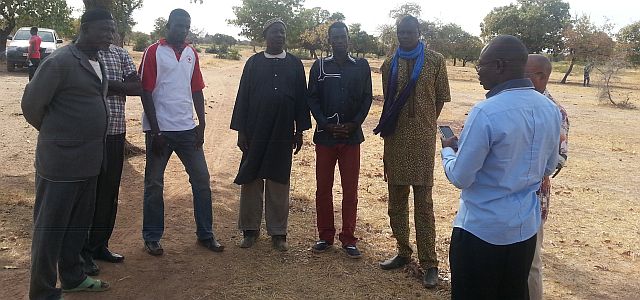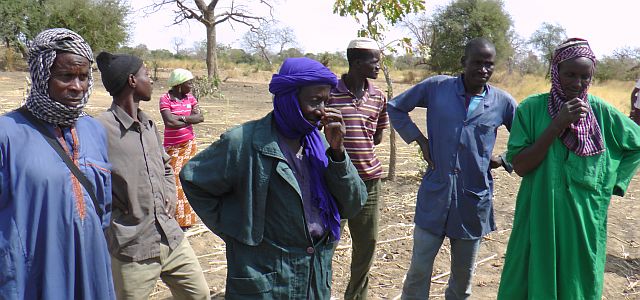The municipality of Matiacoali bordering both Niger and Benin is an important passage for all kinds of cattle mainly cows from Burkina and Niger to Benin. The village of Piega, where a rest area was delimitated with concrete markers painted in white has a market place for cattle that generates between CFAF 50 and 100 million each week, and the market place of Niadiabouanli which is bigger generates around CFAF 150 million, according to the Mayor. “This is an international corridor transiting from Gayeri in Dori region up to Benin bringing a lot of resources to the people but which is a source of many conflicts that will be solved with the concrete markers”.
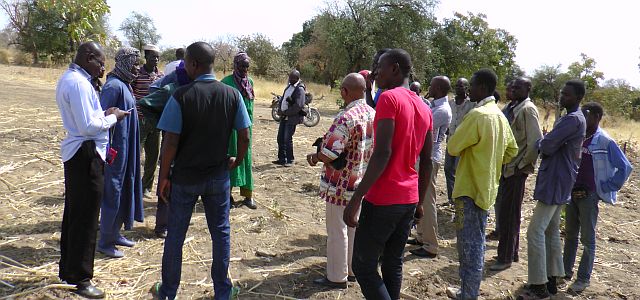 This project was decided by the people of the villages in this zone of the Mekrou river basin in Burkina. Some sensitization was needed to explain to people whose houses were either in the middle or crossed by the corridor and all the people agree to leave homes to contribute to social peace. “This shows how important this project is for them. It is common to see people agree willingly to leave their homes. In 2006, we were obliged to use police forces to remove people from the corridors that were made on another passage”, explains Aboubacar TRAORE, the High Commissioner of the Gourma Province.
This project was decided by the people of the villages in this zone of the Mekrou river basin in Burkina. Some sensitization was needed to explain to people whose houses were either in the middle or crossed by the corridor and all the people agree to leave homes to contribute to social peace. “This shows how important this project is for them. It is common to see people agree willingly to leave their homes. In 2006, we were obliged to use police forces to remove people from the corridors that were made on another passage”, explains Aboubacar TRAORE, the High Commissioner of the Gourma Province.
The chief of the village of Kouyargou, one of the villages where the rest area is located, says that his village people agree to give away the areas located in the corridor. “We are happy to do that but we are facing a crucial problem of water in this area and need a borehole”, the chief stated. This idea is shared by Augustin TANKOANO, the Gourma regional director of animal resources, who adds “water is an essential resource for a corridor with rest areas since both the cattle and humans need it”. The High commissioner explains that he visited himself the pilot project area and had words with the population whose highest desire is to have a borehole for each of the three rest areas. They also request for a vaccination spot and eventually routes to access the corridor.
In Piega, the cattle market is next to the corridor making things easier. But the market lacks an appropriate boarding gate for the cattle which is now made of mud and wood. The villagers unanimously are asking for a water point for animals.
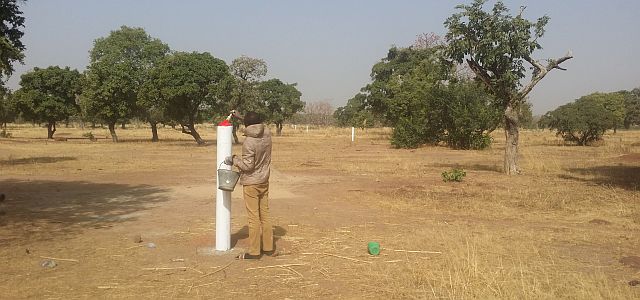
This pilot project of Burkina Faso is marking 91 km of corridor for the passage of animals from Niger and Burkina to Benin. The corridor is marked with concrete and painted in white. Three rest areas in Piega, Kouyargou and Pogninconli. An area space of 1,000 m diameter was delimitated for each rest space in Kouyargou and Pogninconli and 600 m in Piega because of a high land pressure; the corridor itself is 100 metre wide. The works were done by a private contractor who gave jobs to some young people from the villages during the realization of project.
Hilaire Ilboudo, Mekrou project manager for the CWP Burkina is totally satisfied with the implementation of the pilot project which is owned by the population who identified the passage. Some families have left their homes in the corridor and the other are preparing to leave freely without any financial compensation or use of force.
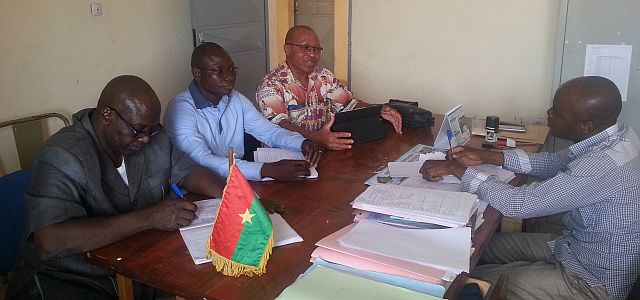
The implementation involved the Governor, the High commissioner, the Prefect, the Mayor, the regional department of animal resources, the regional department of water and sanitation, the regional department of environment, the populations of Piega, Kouyargou and Pogninconli, the local counsellors. “We don’t anybody to tell us how important this achievement is for us. What we did not know was how to make it concrete. Now, we will take care of it like our fields and animals”, conclude the spokesperson of the village of Pogninconli.
